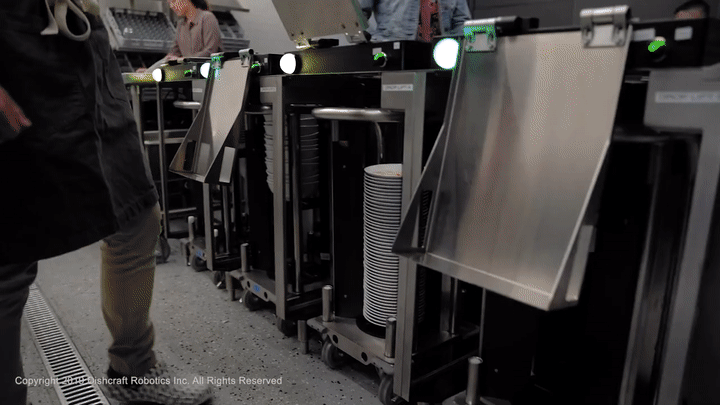The first robot for scrubbing dishes will check each plate for dirt

It won’t be coming to your kitchen any time soon, though (sorry).
The news: A startup called Dishcraft has launched a new robotic dish-scrubber system. Yes, it’s different from a dishwasher! It’s a huge machine that can clean 100 or so plates per go, aimed at commercial kitchens.
How it works: It’s a little bit like a car wash, but for dishes. People stack bowls and plates into a cart and wheel that into the machine. The robot picks them up and cleans and rinses them. It then uses computer vision to inspect them for any leftover food. If one is still dirty, it gets put back through the system. Once the dishes are washed, the machine stacks them into racks. You can watch it in action here.
The appeal: Dish-washing is a dirty, repetitive job, and that’s partly why turnover for staff is so high. Breakage is common, too.
Some limitations: The machine will be extremely expensive and can only handle specially made crockery with magnetic bases, which is another obvious issue. It can’t clean glassware or silverware, either.
This story first appeared in our daily newsletter The Download. Sign up here to get your dose of the latest must-read news from the world of emerging tech.
Deep Dive
Artificial intelligence
Large language models can do jaw-dropping things. But nobody knows exactly why.
And that's a problem. Figuring it out is one of the biggest scientific puzzles of our time and a crucial step towards controlling more powerful future models.
Google DeepMind’s new generative model makes Super Mario–like games from scratch
Genie learns how to control games by watching hours and hours of video. It could help train next-gen robots too.
What’s next for generative video
OpenAI's Sora has raised the bar for AI moviemaking. Here are four things to bear in mind as we wrap our heads around what's coming.
Stay connected
Get the latest updates from
MIT Technology Review
Discover special offers, top stories, upcoming events, and more.